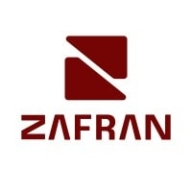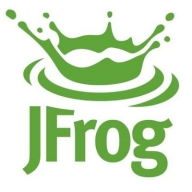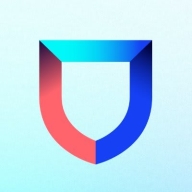


Lacework FortiCNAPP and JFrog Xray are competing products in the domain of security and vulnerability management. JFrog Xray seems to have the upper hand due to its robust feature set, making it a worthwhile investment despite the higher price.
Features: Lacework FortiCNAPP provides continuous cloud security monitoring, automated compliance checks, and anomaly detection. JFrog Xray offers advanced vulnerability scanning, deep artifact security, and comprehensive analysis of software components. JFrog Xray's features are critical for dependency management, distinguishing it from its competitor.
Room for Improvement: Lacework FortiCNAPP could enhance the coverage of its compliance reporting and further refine its anomaly detection accuracy. Improvements in interface user-friendliness and integration with additional platforms are also desirable. JFrog Xray could benefit from simplifying its deployment process and improving initial setup support. Enhanced integration capabilities with non-JFrog ecosystems and more intuitive user navigation would also be beneficial for users.
Ease of Deployment and Customer Service: Lacework FortiCNAPP offers a streamlined deployment process with excellent integration capabilities and responsive customer support. JFrog Xray, while slightly more complex to deploy, provides robust documentation and effective customer service. Here, Lacework FortiCNAPP has an advantage due to its simpler deployment process.
Pricing and ROI: Lacework FortiCNAPP presents an attractive pricing model with a quicker setup time, allowing faster ROI. JFrog Xray involves a higher initial setup cost but compensates with long-term benefits and extensive capabilities. While Lacework FortiCNAPP appears more economical initially, JFrog Xray's extended value might justify its higher initial investment for those requiring comprehensive security solutions.
| Product | Market Share (%) |
|---|---|
| Zafran Security | 1.1% |
| Lacework FortiCNAPP | 1.3% |
| JFrog Xray | 1.5% |
| Other | 96.1% |



| Company Size | Count |
|---|---|
| Small Business | 1 |
| Midsize Enterprise | 3 |
| Large Enterprise | 6 |
| Company Size | Count |
|---|---|
| Small Business | 4 |
| Midsize Enterprise | 4 |
| Large Enterprise | 3 |
Zafran Security integrates with existing security tools to identify and mitigate vulnerabilities effectively, proving that most critical vulnerabilities are not exploitable, optimizing threat management.
Zafran Security introduces an innovative operating model for managing security threats and vulnerabilities. By leveraging the threat exposure management platform, it pinpoints and prioritizes exploitable vulnerabilities, reducing risk through immediate remediation. This platform enhances your hybrid cloud security by normalizing vulnerability signals and integrating specific IT context data, such as CVE runtime presence and internet asset reachability, into its analysis. No longer reliant on patch windows, Zafran Security allows you to manage risks actively.
What are the key features of Zafran Security?
What benefits can users expect from Zafran Security?
In industries where security is paramount, such as finance and healthcare, Zafran Security provides invaluable protection by ensuring that only exploitable vulnerabilities are addressed. It allows entities to maintain robust security measures while allocating resources efficiently, fitting seamlessly into existing security strategies.
JFrog is on a mission to enable continuous updates through Liquid Software, empowering developers to code high-quality applications that securely flow to end-users with zero downtime. The world’s top brands such as Amazon, Facebook, Google, Netflix, Uber, VMware, and Spotify are among the 4500 companies that already depend on JFrog to manage binaries for their mission-critical applications. JFrog is a privately-held, global company, and is a proud sponsor of the Cloud Native Computing Foundation [CNCF].
If you are a team player and you care and you play to WIN, we have just the job you're looking for.
As we say at JFrog: "Once You Leap Forward You Won't Go Back!"
Lacework FortiCNAPP provides robust cloud security, combining vulnerability management and multi-cloud insight with user-friendly controls, machine learning detection, and compliance support.
Lacework FortiCNAPP specializes in cloud security by merging machine learning anomaly detection with agent-based vulnerability management to offer detailed alerts and compliance reports. Its comprehensive approach allows continuous monitoring across AWS and Kubernetes, providing insights from an attacker's perspective. The platform offers automation and seamless Slack integration, facilitating collaborative and efficient cloud security management. Users value its ability to handle multi-cloud environments and scan IAC scripts, configurations, and compute nodes across AWS and GCP.
What are the key features?Organizations across sectors leverage Lacework FortiCNAPP for cloud security, focusing on compliance, security posture, and vulnerability management. It is widely used for monitoring AWS and Kubernetes environments, scanning IAC scripts, configurations, and securing compute nodes. It supports multi-cloud security posture management and log ingestion, enabling companies to maintain strong cloud infrastructures without dedicated security layers.
We monitor all Vulnerability Management reviews to prevent fraudulent reviews and keep review quality high. We do not post reviews by company employees or direct competitors. We validate each review for authenticity via cross-reference with LinkedIn, and personal follow-up with the reviewer when necessary.